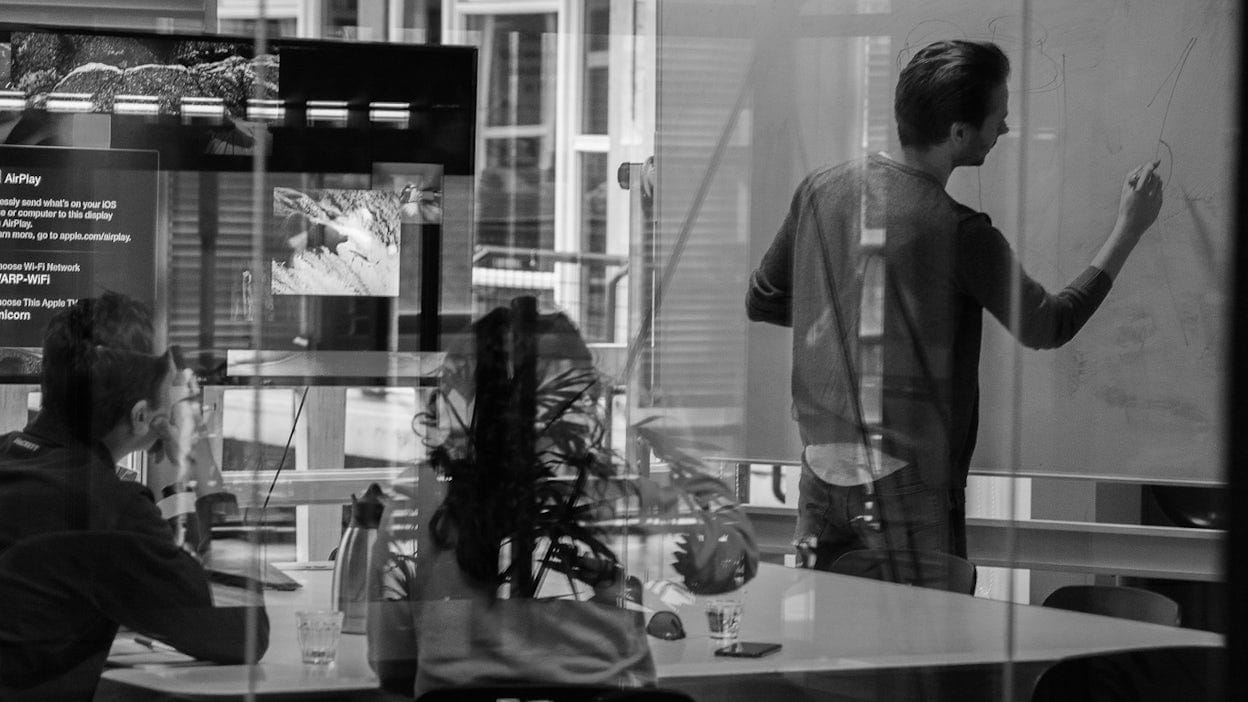The wearereasonablepeople hackathon
There are few places where thought and action come together more effectively than a hackathon. Short and intense by design, hackathons are events in which groups of developers, UX/UI designers, and others collaborate on projects, troubleshooting and ideating in real time, coming up with concepts and doing their best to realise them.

wearereasonablepeople is a Rotterdam-based design and development agency, specializing in human-centric digital products and services. With the stated goal of “making problems cease to exist and making the world a better place while we’re at it”, wearereasonablepeople believe that technology can help reshape organisations and communities. And seeing as how digital is currently reshaping the automotive world, they decided to experiment. With Polestar 2.
“We were quite intrigued by the idea that instead of installing an app on your phone, you can now install an app in your car,” says wearereasonablepeople Founder and Director Chris Beemster. “That radically changes the entire paradigm around the concept of a car.”
“For designers, a hackathon is a great way to quickly explore new technologies and see how they fit into the design process,” says UX designer Bart de Klein. “My team, for instance, explored the idea of having a taxi app in a Polestar 2 that allows taxi drivers to pick up passengers all across the city, which also incorporates seamless payments via NFCs or bank transfers.”
With this idea formulated, de Klein and his team set out to see if it was possible. Through a combination of the Polestar emulator and one of two Polestar 2s that wearereasonablepeople had on hand, they were able to quickly see the system’s capabilities and limitations, as well as look at the system itself from multiple angles.
“When you analyse the Polestar 2 system, you see that it’s set up for a lot of future enhancements,” he states. “There’s a very structured backbone, with a lot of space reserved for functionalities which will become available in the future.”




01/02
De Klein’s team wasn’t the only one. While they were exploring the possibilities of their taxi app, UI designer Marian Vijverberg and her team were looking for ways to make tangible, sharable memories of Polestar 2 road trips.
“We wanted to find a way to commemorate a trip, make sure that you can save and relive those memories,” Vijverberg says. “So, we figured that since Polestar 2 has many cameras, it would be fun to be able to film the environment in specific parts of your trip and be able to edit that afterwards and create a video out of it.”
It was through the aforementioned emulator that Vijverberg and her team were able to create a proof of concept and ultimately win the hackathon. “A developer in our team was able to create a quickly edited video,” she explains. “In the emulator, there was one screen where you could cut and splice different video streams and export them as one stream, which was super cool.”
In addition to their insights about the system, the designers also had some reflections on Polestar’s aesthetic.
“I think the fact that the colour palette is so limited is really interesting,” states Vijverberg. “This, along with the choice to only use one typeface and weight, is the way to explore new types of design within automotive.”
“This visual style also transcends the automotive domain,” says de Klein. “People are slowly starting to expect seamless transitions from devices within application spaces. Polestar are taking a really important step in that direction.”
“When we were planning the hackathon, we reached out to Polestar,” says Beemster. “We got in touch with (Polestar Service Designer) Anya Ernest, and she and her team did everything within her power to support the hackathon on really short notice. It’s so cool to see that enthusiasm.”


